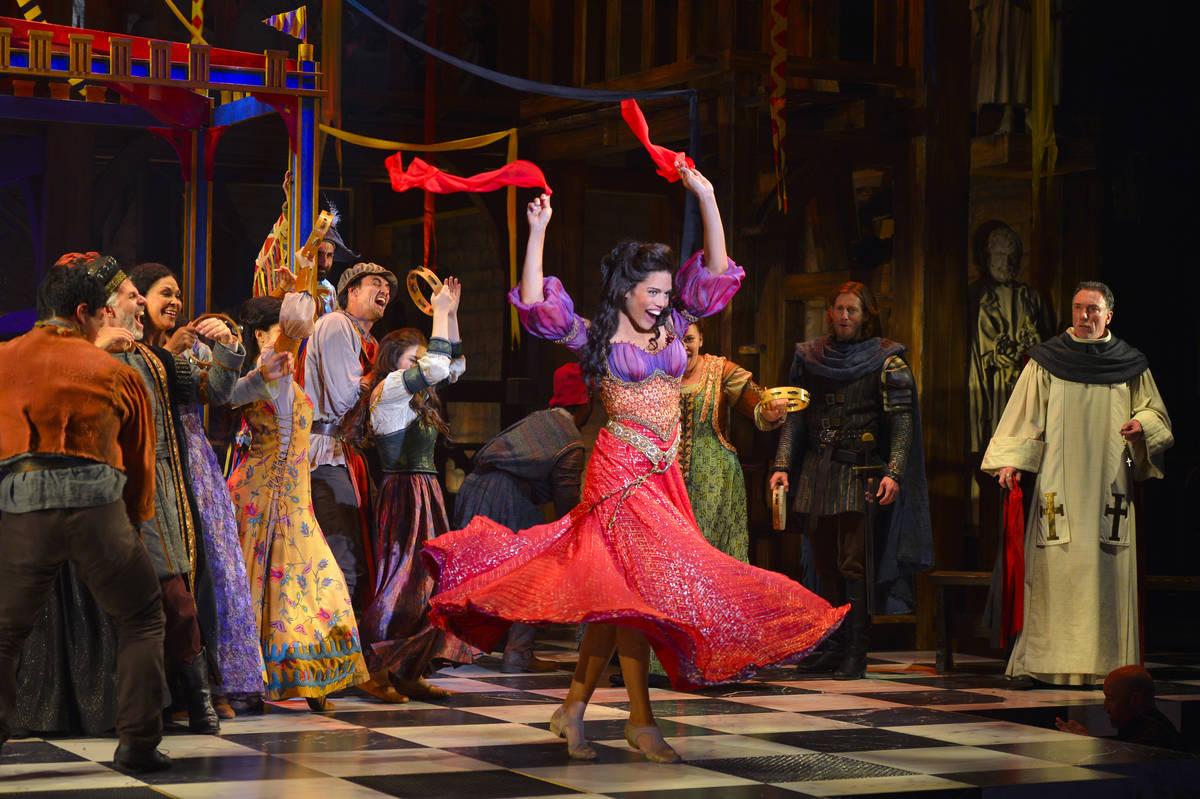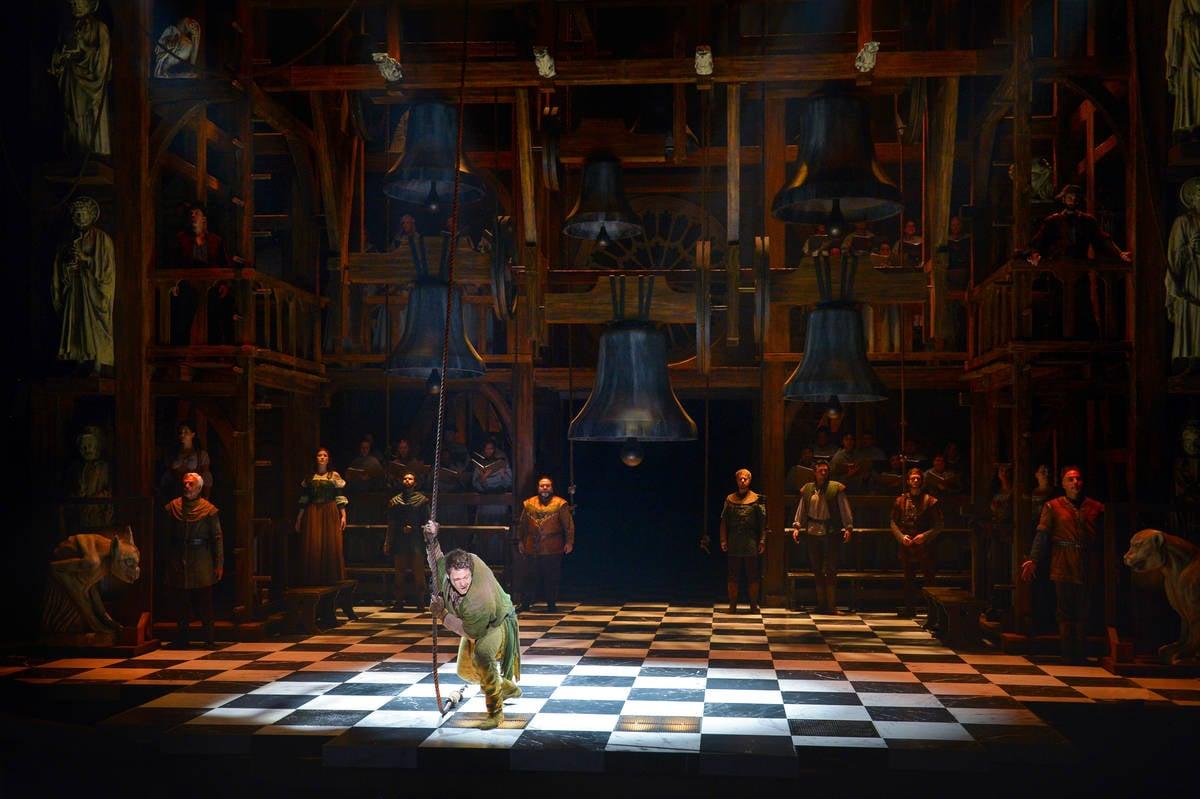A Disney classic is revamped for the stage in a lavish performance of love and lust.

Rating: 5.0/5.0
Directed by Scott Schwartz
Written by Peter Parnell
Starring Michael Arden, Patrick Page, Ciara Renee, Andrew Samonsky
Runs Oct. 26 to Dec. 14
Location: La Jolla Playhouse
Circa late 1980s, at Disney Studios right before its “renaissance,” some brilliant producer decided that a Victor Hugo novel about a poor kid ridden with birth defects, an objectified gypsy and a crazy cleric would make for a perfect animated film. That’s the only rational explanation for what became 1996’s “The Hunchback of Notre Dame.” And sure, it worked — to an extent. Just ask a Hugo purist with a vendetta against comic-relief gargoyle statues.
Then ask said-purist to head over to the La Jolla Playhouse and watch the North American premiere of “The Hunchback” musical, produced by the Disney Theatrical Group. What remains from the animated film is the earworm-inducing score of eight-time Oscar winner Alan Menken, and by the Disney Legend’s standards, the music is his darkest and most haunting to date.
The plot itself is vaguely reminiscent of the Disney film: Claude Frollo (Patrick Page), a man of the cloth, reluctantly takes in his orphaned, deformed nephew Quasimodo (Michael Arden) and hides the boy away in the majestic Notre Dame Cathedral, of which the hunchback becomes the bellringer. Quasimodo ventures outside the walls of Notre Dame for the first time in his life as he sneaks into a carnival hosted by the Parisian Romani. As a result, he befriends the beautiful Esmeralda (Ciara Renee) and stirs the ire of his stern uncle, who also seeks the Romani woman’s attentions. Enter a third man infatuated with Esmeralda, the freshly decorated captain Phoebus (Andrew Samonsky, who brings enough suave swagger to outdo a Disney prince), forming a love quadrangle inevitably followed by heartache and tragedy. The more adult, complex themes that had been muted in the animation are accentuated on the stage, making this production geared more towards audiences who either grew up watching the 1996 film or are looking for another musical adaptation in the vein of “Les Miserables.”

However, the cast infuses its performances with just the right amount of Disney-esque appeal to offset the darker nuances of the story through powerhouse vocals. Arden, in particular, steals the show with his deeply sensitive, moving portrayal of his crippled and deaf protagonist. In pure Menken fashion, Quasimodo’s “I want” song, “Out There,” as well as his duet with Esmeralda, “Top of the World,” makes the most of Arden and Renee’s soaring voices, but in a way more soulful than saccharine, contrasting their animated counterparts. As the foreboding antagonist, Page also delivers powerfully resounding numbers, especially in the vengeful “Hellfire.” Supported by the stunning, intense choral group SACRA/PROFANA and accompanied by artful lighting, the number provides just one of many moments that are more thrilling live than anything animation or CGI could achieve.
Because of this lack of Hollywood magic, the stage itself had to be adapted to smoothly transition from the exterior to interior of the cathedral, as well as from its first floor to the attic in which Quasimodo lives. The Playhouse has worked around this potential snag through its clever and intricately carpentered set design, mainly consisting of a detailed, majestic replica of Notre Dame’s rose window. Equally arresting in their grandeur are the bells of Notre Dame themselves, which ring in time to the Oscar-nominated score and hold a commanding character all their own.
All of these seemingly minute details are nowhere to be found in the original Disney film, making this musical the greater masterpiece and, needless to say, the better adaptation. But because of the latter, anyone expecting a typical Disney-produced play may find themselves sitting uncomfortably by the end as both hero and villain are mired in moral ambiguity. Yet it is this newfound complexity that will put this musical right on track to becoming a Broadway hit.







